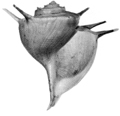
ABSTRACT
The changing ecological context for molluscs in long-lived lakes through deep timeFrank Wesselingh,
Naturalis, P.O. Box 9517, 2300 RA, Leiden,
The Netherlands, wess...@naturalis.nnm.nl
http://www.geo.vu.nl/~pal/Climazonia/Wess.htm
The fossil record of long-lived lakes provides insights into the temporal and spatial development of lacustrine faunas that are unavailable through study of living systems alone. The number of species in such lakes changes as a function of immigration, anagenetic evolution, cladogenesis and extirpation/extinction. The total number of species also should be a function of lake longevity, continued presence of specific habitats through time as well as habitat heterogeneity. In the case of Miocene Lake Pebas, which covered western Amazonia between c. 24 and 11 Ma, in situ diversification is the most prominent process contributing to elevated species numbers. For several of the endemic Pebasian groups the adaptive nature of their radiation can be inferred. A major theme in long-lived lake evolution is extralimital evolution: the acquaintance of morphological and ecological characteristics that are beyond the usual variation in related taxa living elsewhere. The Quaternary Pontocaspian system, including the Caspian Sea and at times the Black Sea, Sea of Marmara and the Aral Sea, is an ideal system for the study of extralimital evolution. The Pontocaspian taxa currently living in the margins of the Black Sea have very different ecological requirements from their sister taxa in the Caspian Sea. This shift may be the result of ecological suppression by marine taxa that established in the Black Sea in the Early Holocene. This process may have promoted speciation as well. The wider ecological tolerances of Holocene sister taxa in the Caspian Sea can thus be inferred as the result of release from competition.
